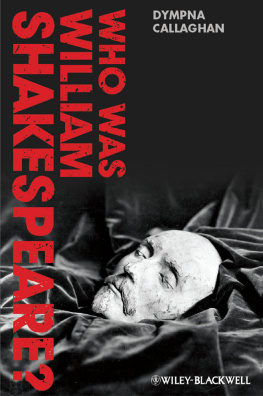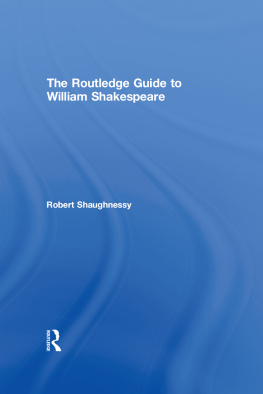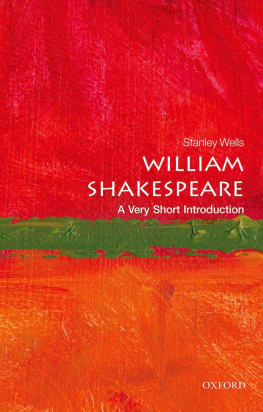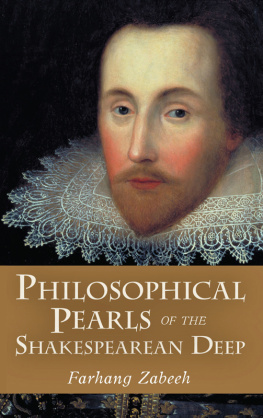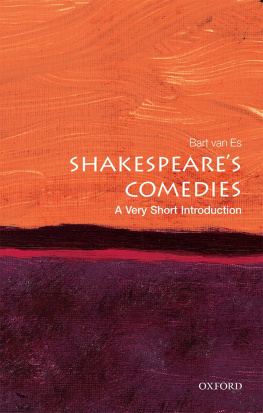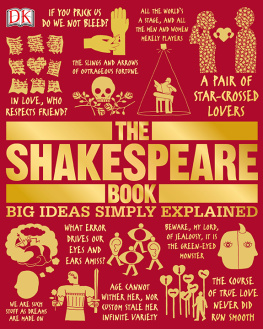
This edition first published 2013
2013 John Wiley & Sons Ltd
Wiley-Blackwell is an imprint of John Wiley & Sons, formed by the merger of Wileys global Scientific, Technical and Medical business with Blackwell Publishing.
Registered Office
John Wiley & Sons Ltd, The Atrium, Southern Gate, Chichester, West Sussex, PO19 8SQ, UK
Editorial Offices
350 Main Street, Malden, MA 02148-5020, USA
9600 Garsington Road, Oxford, OX4 2DQ, UK
The Atrium, Southern Gate, Chichester, West Sussex, PO19 8SQ, UK
For details of our global editorial offices, for customer services, and for information about how to apply for permission to reuse the copyright material in this book please see our website at www.wiley.com/wiley-blackwell.
The right of Dympna Callaghan to be identified as the author of this work has been asserted in accordance with the UK Copyright, Designs and Patents Act 1988.
All rights reserved. No part of this publication may be reproduced, stored in a retrieval system, or transmitted, in any form or by any means, electronic, mechanical, photocopying, recording or otherwise, except as permitted by the UK Copyright, Designs and Patents Act 1988, without the prior permission of the publisher.
Wiley also publishes its books in a variety of electronic formats. Some content that appears in print may not be available in electronic books.
Designations used by companies to distinguish their products are often claimed as trademarks. All brand names and product names used in this book are trade names, service marks, trademarks or registered trademarks of their respective owners. The publisher is not associated with any product or vendor mentioned in this book. This publication is designed to provide accurate and authoritative information in regard to the subject matter covered. It is sold on the understanding that the publisher is not engaged in rendering professional services. If professional advice or other expert assistance is required, the services of a competent professional should be sought.
Library of Congress Cataloging-in-Publication Data
Callaghan, Dympna.
Who was William Shakespeare? : an introduction to the life and works / Dympna Callaghan.
p. cm.
Includes index.
ISBN 978-0-470-65846-8 (cloth) ISBN 978-0-470-65847-5 (pbk.) 1. Shakespeare, William, 1564-1616. I. Title.
PR2894.C27 2013
822.3'3dc23
2012022347
A catalogue record for this book is available from the British Library.
Cover image: A death mask thought to be that of English dramatist William Shakespeare. Photo (c) Hulton Archive/Getty Images
Cover design by www.simonlevyassociates.co.uk
For Chris
NOTE ON THE TEXT
I have adopted the via media in relation to the issue of modernized versus original spelling in using quotations from texts and documents from the period. I have left original spellings except where I felt it would make the language unduly difficult to understand for a non-specialist audience or when a quotation is taken from an already modernized edition. My objective here is to introduce readers to the singular eloquence of sixteenth- and seventeenth-century English with its sometimes alien locutions and resonances and to do so without making early modern spelling an impediment to reading excerpts from the periods texts and documents. Although I have tried throughout to keep notes to a minimum, there are rather more of them in sections that make extensive reference to primary documents and historical materials.
References to the Oxford Dictionary of National Biography ( ODNB ) can all be found in its online edition at http://www.oxforddnb.com/.
ACKNOWLEDGMENTS
First and foremost I want to thank the very best of editors, Emma Bennett at Blackwell, for her faith in me and in this project. She made a world of difference. Ben Thatcher also has my heartfelt thanks for seeing it through the press. I am very grateful for the indefatigable labors of my copy editor Felicity Marsh who has been a joy to work with. I have incurred many debts of gratitude along the way, especially to Gail Kern Paster, Georgianna Ziegler and the staff of the reading room at the Folger Shakespeare Library. Denise Walen kindly lent her expertise to the chapter on theatre, and David Kathman was a wonderfully generous resource for matters pertaining to the geography and organization of theatre in early modern London. I am especially grateful to Paul Hunneyball who provided invaluable information on naming practices in early modern England. Jason Peacey also liberally added to my store of duplicate names to put with those of Shakespeares sisters. To David Cressy I am almost as grateful for his most recent research on literacy and many other matters early modern as I am for the gift of his friendship. The late Irvin Matus was a generous interlocutor over many a Folger tea, and I am so very sad he is not here to see the finished product.
This book like everything else I have ever accomplished in academic life has benefited immeasurably from the guidance and unstinting intellectual generosity of Jean Howard. I am also immensely grateful for the incisive comments and constructive suggestions of an anonymous manuscript reviewer for the press.
Many friends and colleagues listened to my dilemmas about how to frame and organize my materials. Among the most long-suffering are Denise Albanese, Heidi Brayman Hackel, and Deanne Williams. Rory Loughnane proved himself a fabulous and stimulating colleague throughout; Laurie Maguire never tired of talking Shakespeare with me, and I owe a huge debt, as always, to her impeccable scholarship. Despite being a historian of medieval France, Samantha Kahn Herrick provided illuminating insights on our drives to Cazenovia. Frances Dolan always makes me believe that all things are possible, and without her support, intellectual energy, and friendship this book would have been not only much the poorer, but also much less fun to write. Amy Burnette and Rinku Chatterjee provided invaluable research assistance and did so with untiring efficiency and good cheer. I also owe a great debt of gratitude to my students at Syracuse University, past and present, whose encounters with Shakespeare so enhance my own appreciation and understanding of his work. I fervently hope to incur even heavier debts to them in the future.
Last, but by no means least, I must thank my family: my sister, Margaret Newcombe, offered wise counsel upon listening with superhuman patience to weekly installments of where I was with this book. My husband, Chris Kyle, read the script from first to last with unfailingly generous perspicacity and with his extraordinary knowledge of early modern England. I dedicate this book to him.
PART I
THE LIFE
WHO WAS WILLIAM SHAKESPEARE?
In 1841 a canon of Cologne Cathedral, Count Francis von Kesselstadt, died. His passing promised to answer definitively the question that is the subject of this book: Who was William Shakespeare? This was because among the counts dispersed possessions was a death mask bearing the label Traditionen nach Shakespeare, Unfortunately, the unpainted death mask is not an image of Shakespeare, but the belief that it was such epitomizes the persistent desire to capture Shakespeares identity.
The Kesselstadt Death Mask.
Image reproduced by kind permission of Universitts- und Landesbibliothek Darmstadt.
The death mask is perhaps what Shakespeare ought to look like, unlike the figure mounted on the north wall of the chancel in Holy Trinity Church at Stratford-Upon-Avon in 1622, pen and paper in hand (see
Next page
